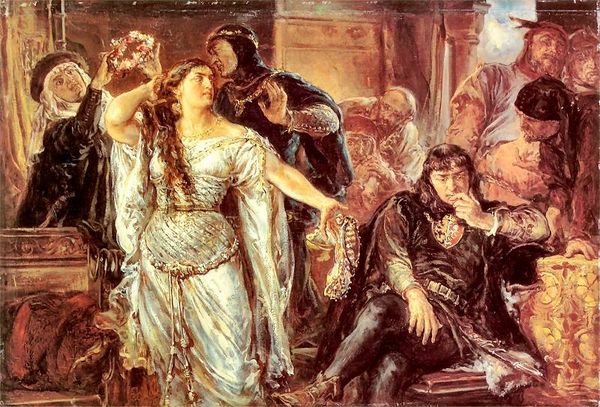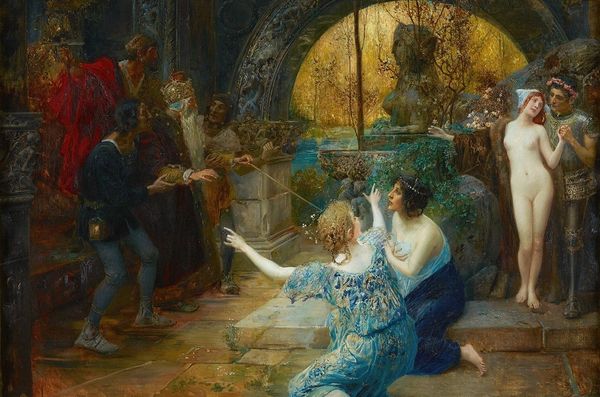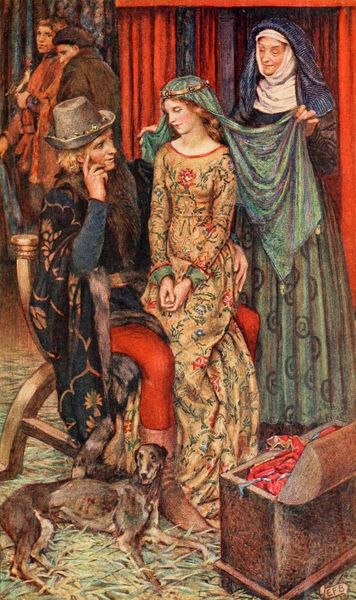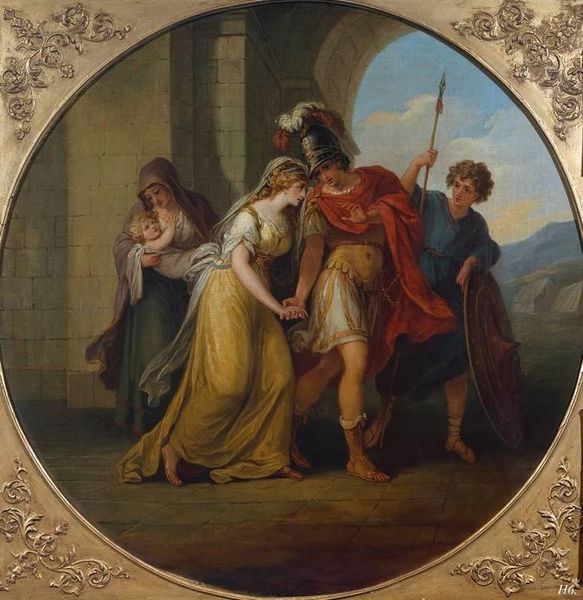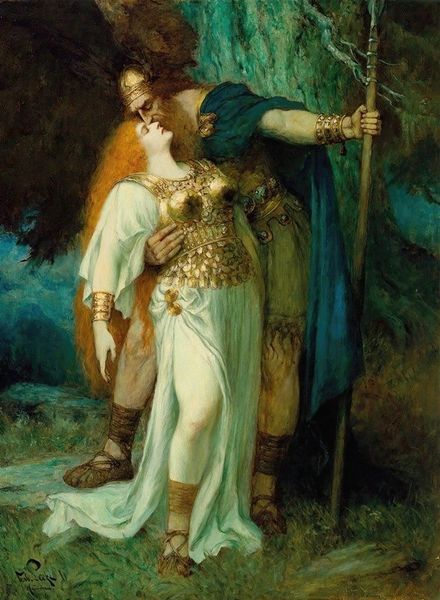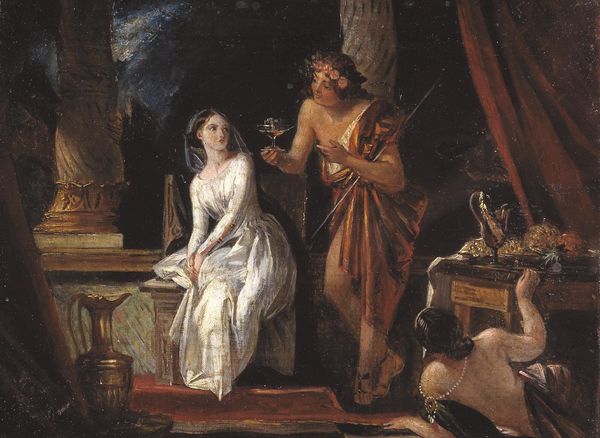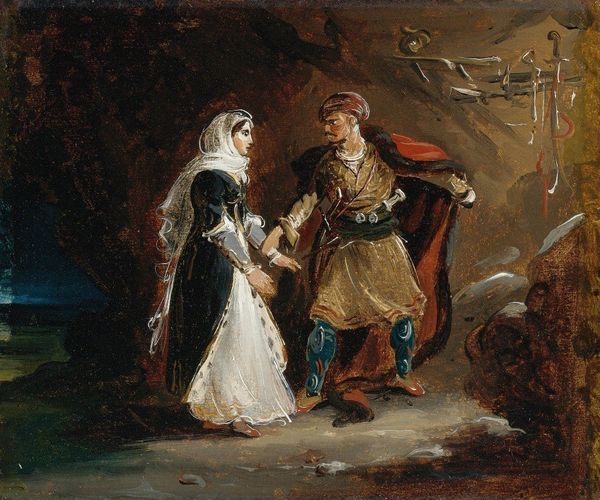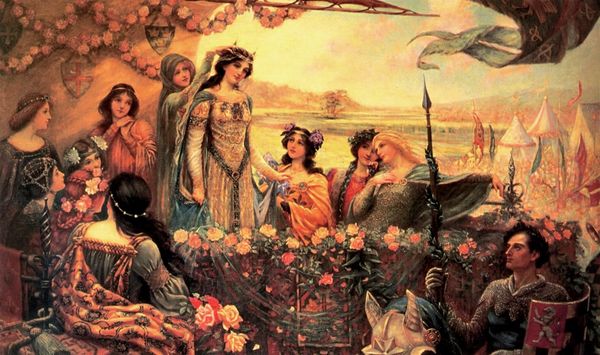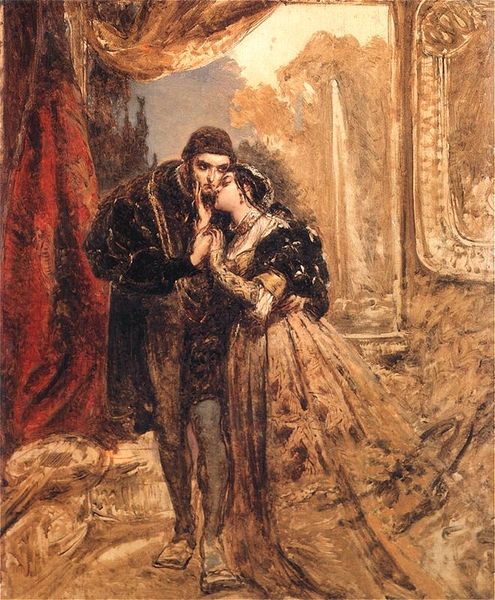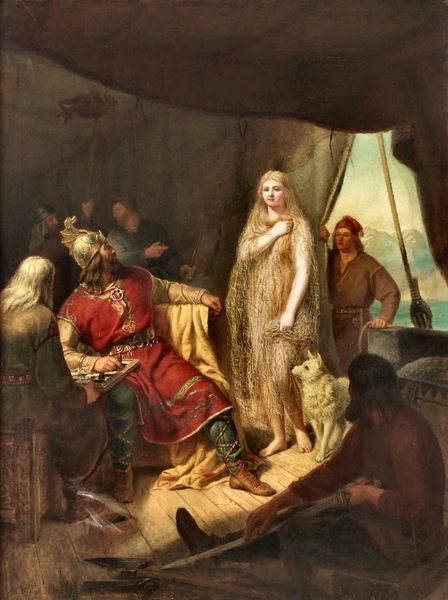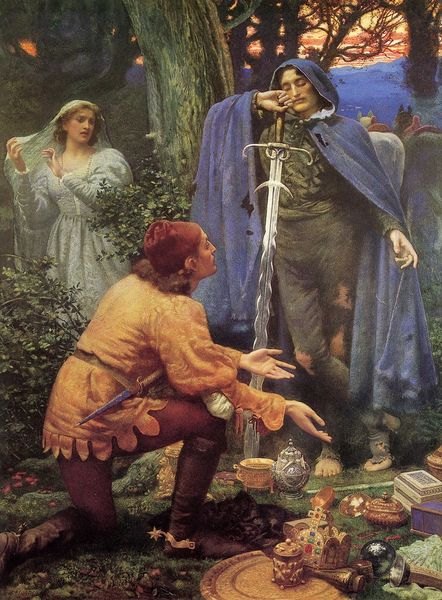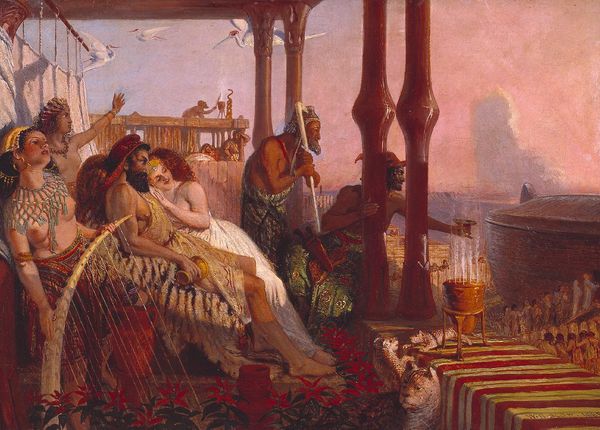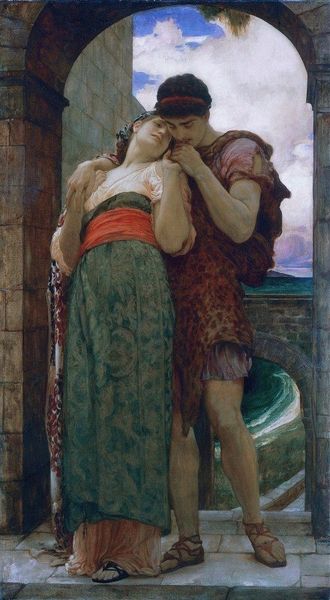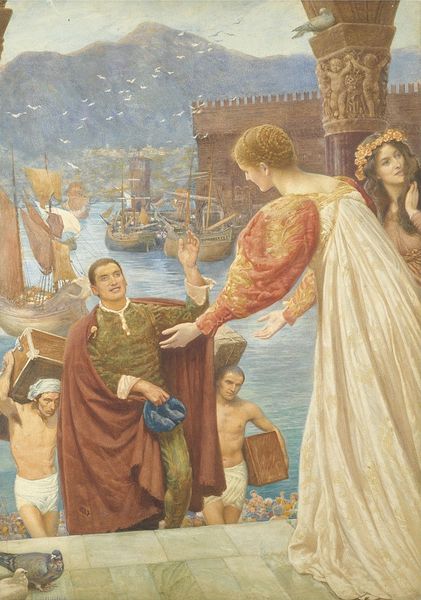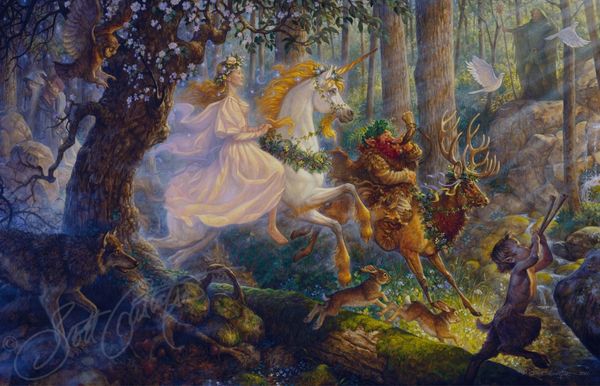
Copyright: Public domain
Editor: Herbert James Draper’s oil painting "Tristan and Isolde," created in 1901, depicts a moment of high drama. The tension between the two figures is palpable. What strikes me is the contrasting color palettes used to define each character, and their poses. What do you see in this piece? Curator: Focusing on the formal elements, one notices the dramatic chiaroscuro, the pronounced contrast between light and shadow, particularly in the drapery and the figures' musculature, enhancing the emotional weight of the scene. How do you interpret Draper's deliberate manipulation of light and shadow? Editor: I feel it really amplifies the mood, especially on Isolde's face. Do you think there is any intention behind Draper's inclusion of secondary figures on the right and left sides of the painting? Curator: Note how the horizontal composition of secondary figures on the ship and sleeping figure on the floor ground the two protagonists and prevent a feeling of levity in such a grandiose topic. It underscores a sort of horizontal tension or anticipation as the ship moves forward, contrasted by a sort of weight, a psychological stasis, in the figures in the middle, perhaps mirroring the imminent fateful decision about to occur? What do you make of the stark lines and shape of the column to the right of Tristan? Editor: I never considered it that way. To be honest, it hadn't stood out, but looking at the geometry of it now I think I can appreciate its significance. Thanks so much. Curator: Indeed. Reflecting on the artist's intent reveals the many complex techniques deployed for maximum effect.
Comments
No comments
Be the first to comment and join the conversation on the ultimate creative platform.
